With the department of basic education’s budget for 2024-25 set at R32.3 billion, and with strategic priorities including improved outcomes and access, an opportunity exists for edtech companies to become key players in the education landscape.
Changing learning landscapes
The world is changing at an unimaginable pace, accelerated by growing economic demands, technological advances and, of course, the global Covid-19 pandemic. According to the World Economic Forum, an estimated 65% of children in primary school today will end up working in jobs that do not yet exist.
The importance of developing change-resilient, tech-savvy learners became noticeably evident during South Africa’s first hard lockdown, when learners and students of all ages were forced to stay at home. A lucky few were able to continue learning, using online platforms and e-learning solutions.
The disruptions caused by the pandemic make it likely that education in its traditional sense will be phased out in the near future, as more people become accustomed to the efficiency, convenience and additional benefits available through either synchronous learning opportunities such as virtual classrooms, or asynchronous solutions like self-paced e-learning courses. The pandemic changed the fundamental way people access and engage with education.
This, coupled with the fact that children need to prepare for a future where work will likely be done remotely, means it is more necessary than ever before to bridge the digital divide, facilitate access to online opportunities and include digital literacy as a feature in school curriculums.
Even before the pandemic, in 2019, the Department of Basic Education trained almost 44 000 teachers in computer skills, and through a partnership with the University of South Africa (UNISA) made use of more than 20 ICT laboratories nationwide to train teachers in digital skills such as coding. While available at many private schools, offerings like coding have also been piloted in a number of public schools to help prepare learners to deal with the inevitable disruptions to learning and work.
The National Development Plan, when addressing how to improve education, training and innovation, specifies that “quality education encourages technology shifts and innovation that are necessary to solve present-day challenges”.
The Department of Basic Education has highlighted key focus areas to promote equal and quality education for South African scholars in keeping with global digital best practice. These include: implementing a curriculum with skills and competencies for a changing world in all public schools; completing an Integrated Infrastructure Development Plan, informed by infrastructure delivery, regular maintenance and resourcing; continuing to improve and strengthen education provisions of learners with special education needs; gradually increasing the number of workbooks available in interactive formats; equipping all students with the skills they need to survive and thrive in the fourth industrial revolution; and providing end-to-end information communications technologies (ICT) solutions for schools by developing and distributing digital content for online and offline learning.
It has also committed to provide young people with the tools they need, including tablets and data, in order for them to access online learning opportunities. In June it was announced that R206-million had been set aside by the provincial government to provide matric learners in Mpumalanga with tablets to help improve their learning experiences.
This is definitely a step in the right direction, but South Africa’s children will not be able to fully participate in the digital revolution as global citizens if the cost of data and the reliability and availability of internet connections and mobile networks are not addressed. This infrastructure is vital in ensuring a successful shift to online learning and the prioritisation of digital literacy and digital skills to allow learners to participate in the workplace of the future.
In both urban and rural areas unstable internet access and a lack of electricity still act as a barrier for children in both traditional education systems and in online learning environments.
If the education system does not adapt to the changing world it finds itself in, South Africa risks having, not only a large youth population that is unemployed, but a youth population that will be largely unemployable going forward.
The cost (effectiveness) of online learning
The pros and cons of online learning have been dissected and analysed extensively since the global Covid-19 pandemic caused school closures worldwide, but one of the most flaunted benefits is also one that makes this form of education so appealing to many parents: it’s cheaper, and by a large margin!
 Education and learning consultant Delia Hamlett says online learning may seem appealing for parents, but not every child is suited for remote tuition
Education and learning consultant Delia Hamlett says online learning may seem appealing for parents, but not every child is suited for remote tuitionIn response to national lockdowns and the need for physical distancing, many traditional schools have also started offering online options or hybrid-learning experiences. Remote learning is a safe and affordable option for parents who are looking to cut costs without sacrificing the quality of their child’s education.
A study by financial advisory group AlphaWealth found that a top-class education will set parents back between R1.8-million and R8.7-million over the course of their child’s basic education, depending on whether they attend a quality public school or a private institution. This, their report adds, does not include school uniforms, textbooks, extramural activities or even the acceptance fee that some private schools charge — this is purely the cost of tuition.
The AlphaWealth study found that premium private schools were offering online-only classes at a rate of R85 000 per year, down significantly from their regular in-person school fees that would set parents back a cool R150 000 annually.
AlphaWealth found that other independent school networks had also started reducing their rates for online learning options from R73 000 per year to R44 100 per year for grade Rs, and from around R110 000 to just over R50 000 annually for grade eight to 10 learners.
Whether opting for the premium schooling options or the more affordable school network, parents could be saving between R60 000 and R70 000 each year by taking their child’s learning online.
Delia Hamlett is an education and learning consultant and has been working as an high school teacher during the pandemic. She says that when considering an online education solution, parents must also be cautious of the hidden costs that come with remote learning. “While the school fees are lower and parents find it more cost-effective than traditional schooling, there are additional expenses that will be incurred; think about devices, electricity and data,” she warns.
But those are the obvious costs. “If you’re new to online learning and you don’t check the system requirements on your computer, then inexperience can be expensive!” Many online programmes may also require parents to purchase specific software.
She says educators are also reporting an increase in children who need glasses to counteract the glare and digital eye strain that can result from prolonged screen time. “And then of course there is the adjustment to being physically isolated from peers, even when digitally connected,” she explains. If a child is feeling isolated, depressed or anxious, or simply not adjusting to the “new normal” online experience, then mental health interventions with a professional can set parents back between R700 and R1 400 a session.
For students pursuing an asynchronous online learning experience that is self-paced and does not involve a timetabled, interactive virtual classroom, extra lessons might be needed if they encounter content that they cannot internalise on their own. Fortunately, however, Hamlett says many asynchronous schooling options do offer one-on-one support for learners who are struggling.
While online learning and the benefits may be appealing, especially for parents who want to raise active digital citizens prepared for the future of work, remote education might not be the right fit for every child. Academic publisher Juta found during its 2021 Survey of South African students that more than 99% of respondents had been learning exclusively online or using a hybrid model, with individual experiences varying greatly. Of the respondents, 33% found the experience to be better than in-person learning, while 40% found the experience worse and less effective.
Online learning resources for the ‘new normal’
The Covid-19 pandemic has seen a sharp increase in both the development and the consumption of online learning materials. Students, parents and teachers alike have been turning to the internet to explore new ways of learning and digital knowledge-sharing. Here is a list of some of the most popular online resources to enhance online education experiences and foster a love for lifelong learning in fun and interactive ways:
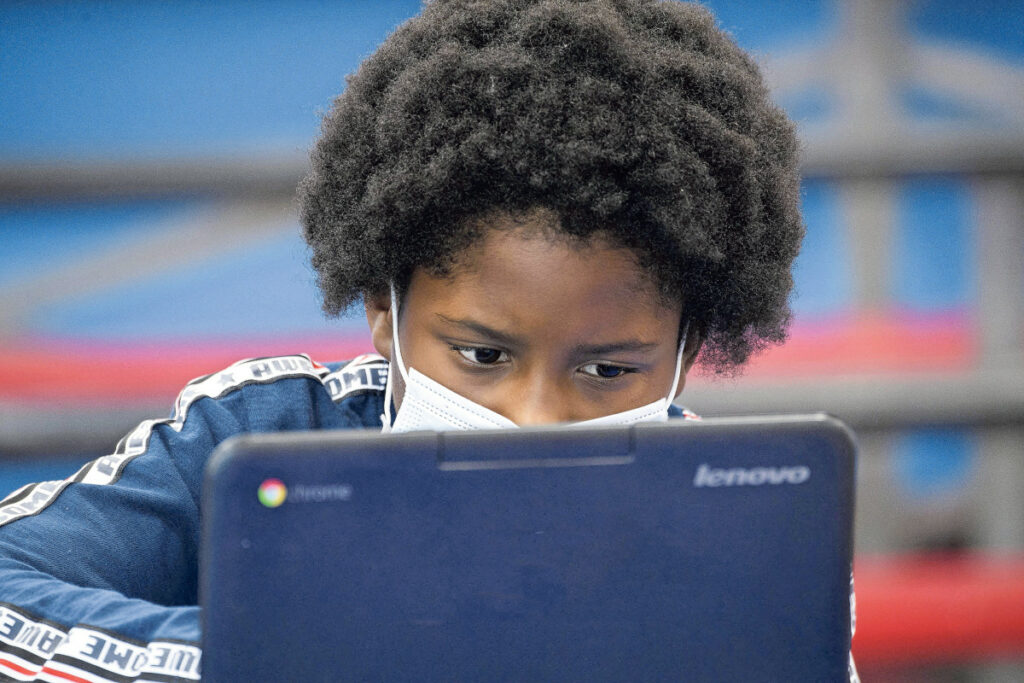 There’s a number of online learning platforms, apps, schools and sites out there. If you choose the best ones for your child, it will help foster a love for lifelong learning. (Photo: Patrick T. Fallon / AFP)
There’s a number of online learning platforms, apps, schools and sites out there. If you choose the best ones for your child, it will help foster a love for lifelong learning. (Photo: Patrick T. Fallon / AFP)
Facebook Zero
The app itself is not data intensive, but can be used to access educational pages to help children further their goals and progress on their learning journey. Facebook pages such as Opportunities for Africans and Opportunity Desk for You post educational material as well as opportunities for scholarships, competitions, internships, training and volunteering.
Duolingo
Learners who do not speak English as their primary language can use this app to help with their conversational skills, reading and writing. This is also a helpful tool for children who are taking an additional language like French or German. There is both a free and a paid version of this app.
Ambani Africa
Closer to home, this Android app offers six African languages at a foundation-phase level, making it perfect for young children who want to grasp core concepts in their mother tongue. The app, which can also be used by older children and adults who are learning the basics of isiZulu, isiXhosa, Setswana, Sepedi, Thsivenda or English, makes use of games, songs and stories, as well as Augmented Reality downloadable books to facilitate learning. There is also an option for weekly online group classes and individual tutoring.
YouTube
The video streaming platform has its own dedicated education and learning channel that can help visual learners with everything from study-from-home tips to crash courses in traditional school subjects and lessons on SQL (a programming language), illustration, cooking and art. The channel also has career guidance videos and industry explainers to help students make informed decisions about their future.
BrainPOP.com
This website offers an array of animated resources to support learning and engage students, either at school, at home or on mobile devices. The content includes videos, quizzes, games, mobile apps and activity pages and covers hundreds of topics within the subjects of math, science, social studies, English, technology, arts and music, and also includes health. While there are paid subscriptions available, there is also a range of free interactive content available on the site.
Codecademy
Here students can learn to code for free, with self-paced learning courses on topics such as Python, front-end engineering, JavaScript, HTML, web development, data science and more. Beginners to coding can access the basics of programming languages. The website offers a number of courses free of charge — all that is needed is a computer and access to the internet.
Udemy
While most people think of the American massive open online course (MOOC) as being aimed at adults wanting to reskill or upskill, there are a surprising amount of courses that cater specifically to primary and high school students. By mid-2021, the platform had more than 44-million students, 183 000 courses and 65 000 educators and instructors teaching materials in 75 different languages.
NOVA videos
This website is perfect for grade six to 12 students, and makes engaging and compelling science documentaries available for viewing free of charge. There are a wide variety of topics, and viewers have the choice to watch a bite-sized version or longer version of the documentary that will capture the imagination in ways that a school textbook never could.
UNESCO
UNESCO also has a comprehensive list of distance learning solutions and online learning tools available here: https://en.unesco.org/covid19/educationresponse/solutions
Africa’s leading online school
Covid-19 has disrupted all aspects of life, but has also accelerated new solutions and opportunities for age-old problems. The future of online education — a learning experience that was inconceivable less than a decade ago — is now a reality. For Teneo, Africa’s leading online school, lockdown was an opportunity to radically accelerate future-focused learning experiences for thousands of children who were failed by the disrupted traditional education system during the pandemic and who are keen to start learning again, in exciting new ways that will equip them for life and career success in a new, rapidly digitised world.
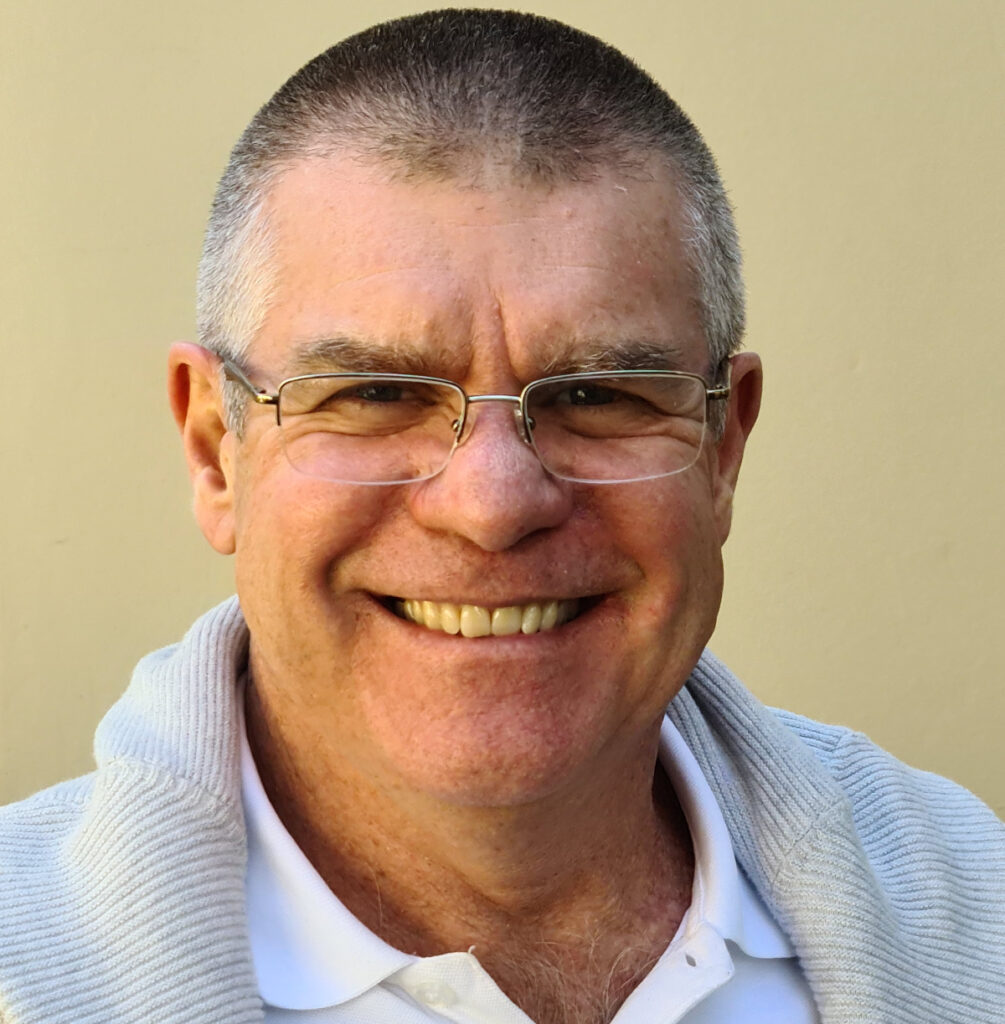 John Shaw – CEO of Teneo Education
John Shaw – CEO of Teneo Education
From humble beginnings in 2018, long before Covid-19, the school has grown from just 85 students to where it is today, with 9 000 learners in all corners of the world.
John Shaw, CEO of Teneo, says online learning solutions are not new. “These virtual opportunities have been here for years — but I don’t think people believed in them the way they do now,” he explains. “Covid-19 has fast-tracked so many processes and shaped the world to a point where remote work is the norm and the future of education is here to stay.”
Preparing for a new world and the future of work
If the world of work that children are facing will be largely online and virtual, then schooling should be tailored to prepare them for that reality. “People are working from home and suddenly it’s a real, believable solution for them,” he says. “Parents find online, timetabled schools like ours with live, interactive classes led by real teachers more convenient than traditional schooling. They love the fact that they don’t have to drive around in morning traffic to get the kids to school on time,” he says.
But the benefits go beyond just beating the traffic: Teneo also offers self-paced, synchronous (live) and asynchronous (recorded) education options that present children with much wider and more supportive intellectual, social and extramural opportunities than regular school.
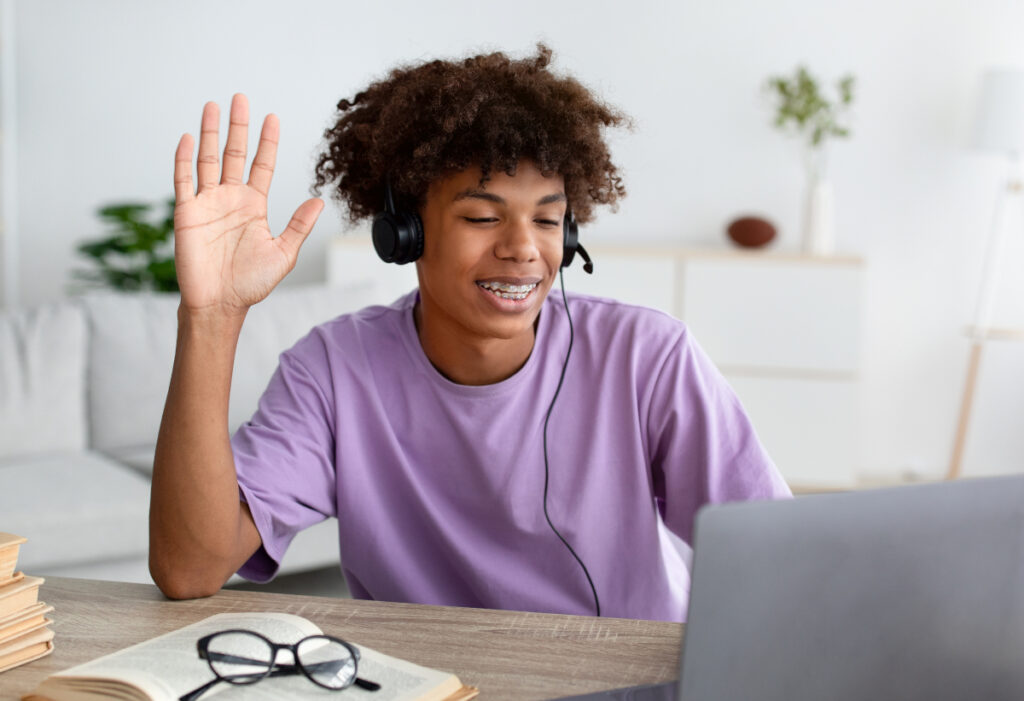 Daily live classes accessed from anywhere
Daily live classes accessed from anywhere
Shaw says online learning equips young people for the workplace of tomorrow: “The future of work, to a large extent, is going to be virtual. So we need to ask: what are the skills that our children will need to function in this virtual world? You need to be responsible, you need to be able to take care of your own objectives, more or less independently, and you need to be able to drive your career on your own steam. When working in a virtual world as adults, that’s exactly what’s required. That is why we’re preparing students who are responsible digital citizens for the future of work.”
Soft skills and flexible, continuous learning will become important, he says. “The world is changing at such a rapid rate that fewer people will pursue three- or four-year qualifications. Short courses, immediate upskilling and lifelong learning will flourish, not only for mid-career professionals, but for scholars and school leavers too.”
Premium education will now become accessible to all
Online education, says Shaw, has the capacity to democratise education. “Online education can improve access to top quality education and level the playing field for children from all walks of life. We have no location barriers for teachers or students; all they need is a laptop and WiFi connection.” The fully online nature of Teneo also means that the cost of learning is much lower when compared to traditional schools, while standards are actually higher. Remote learning also offers a safe, relatively risk-free learning environment during a global pandemic.
Teneo employs more than 500 SACE-registered educators and expects the number to rise to well over 1 000 by January 2022 to cater to the more than 20 000 students expected to enrol for the upcoming school year.
With the current accelerated shift towards digitisation, it’s fascinating to think about what the education of tomorrow will look like: “Firstly, the number of students and educators moving online is going to increase dramatically over the next decade. This means that online schooling will become a realistic and accessible option for more parents and children, and the country’s best teachers will follow.
“If you think about it, entrepreneurship is the only solution to our country’s job crisis. We therefore have to empower our students to be confident enough to go out there, enter the workplace or start their own businesses and employ others.”
Shaw says traditional schools must be feeling the heat. Because of Teneo’s unique, synchronous learning experience, online and remote does not equate to antisocial. “We have quite a number of interventions where students interact, with live classes where they engage with each other and their teacher, exactly as they would in a traditional classroom environment. We also have a number of afterschool extramural activities, from Master Chef and robotics, to choir, sports and entrepreneurship with a Shark Tank style competition element.”
Preparing children to become flexible, ever-evolving professionals
At Teneo, children are taught to develop a change-resilient mindset. “Changes in the digital economy are only going to accelerate, so our children must be able to deal with that. They need to be flexible, adaptable and, going back to the idea of lifelong learning, they must understand that they need to keep developing, reinventing and upskilling themselves to remain relevant and sought after in the job market.”
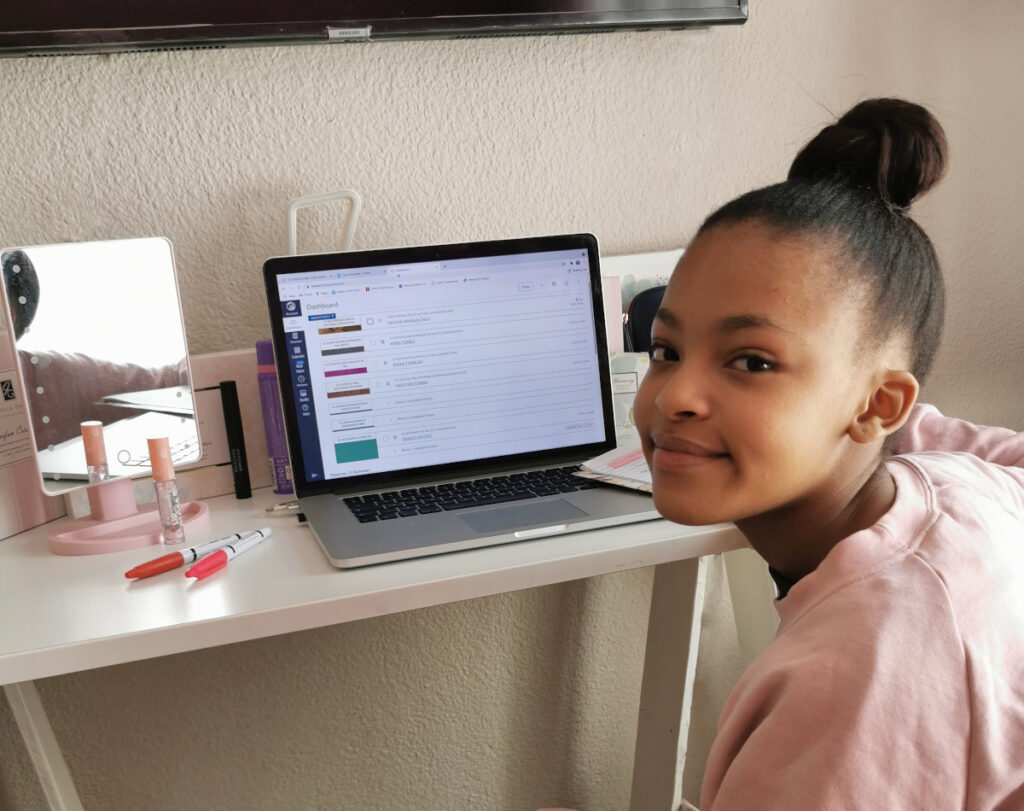 Tatum Billings, Grade 8, Teneo Student
Tatum Billings, Grade 8, Teneo Student
A decade ago different life skills were needed. Today learners need to work and interact with people in a remote, digital-first world. Online education helps mould learners into responsible digital citizens. They realise that virtual spaces are not completely removed from the world they live in, and also that online interactions may have real-world consequences.
Written and verbal communication skills, analytical skills, critical thinking and problem-solving skills need to be prioritised. “We plan on offering coding, for example, which should not only be seen as a skill in certain careers, but rather as a wonderful way to build critical thinking, problem-solving, logic and reasoning skills to generate an income across all industries,” says Shaw.
Building up a digital learning treasure chest
Teneo’s digital world of ed-tech is cutting edge. World-class learning management systems and student information systems mean learners benefit from a truly fourth industrial revolution experience. “Gone are the days of zoning out in the classroom and not being able to remember what the teacher said — it’s all documented now and our content is recorded, to form a digital treasure chest of valuable content over time,” he explains. “Content is created, lesson plans are developed and made visible and bankable to students. They are always informed about what they will be doing today, tomorrow and next week.”
Online learning is here to stay, says Shaw, and instead of kicking against it it should be acknowledged as an enormous opportunity. “Online learning technology has really advanced over the last few years, despite being quite difficult and unstable prior to that.” Fortunately, he says, Teneo started small. It was, therefore, able to overcome obstacles as they arose, while growing with its students to give learners access to world-class and scalable online technologies that facilitate learning and promote a holistic educational experience.
Digital literacy
Young people have increasingly turned to the internet during the past two years, not only to continue their education during a global pandemic, but to counteract the anxiety and social isolation that came with lockdowns and physical distancing. This according to Phakamile Madonsela, who co-ordinates Media Monitoring Africa’s (MMA) Web Rangers — an international digital literacy programme implemented in South Africa to help young people navigate digital challenges and become active digital citizens.
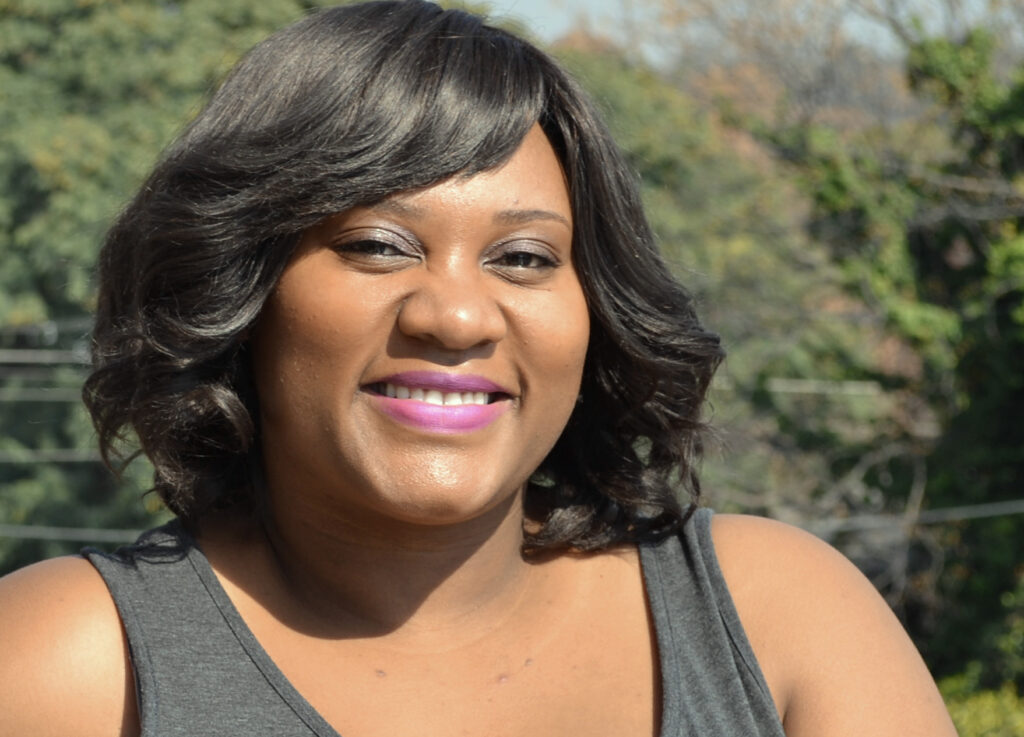 Phakamile Madonsela co-ordinates Media Monitoring Africa’s Web Rangers
Phakamile Madonsela co-ordinates Media Monitoring Africa’s Web Rangers
During this time of uncertainty, young people have used the internet to meet new people, connect with others across the globe, and instantly share videos, pictures and information. The virtual world has also become a space of learning. “Sadly the same internet that connects, inspires and teaches also has the potential to cause such great harm, and without the necessary digital and media literacy skills, many children fail to use the internet in an effective and responsible way,” Madonsela says.
With more online education and remote teaching options becoming available, children are inevitably spending more time in front of their screens. “The nature of social media and the internet is that it is fast-paced, information is ever-changing, and oftentimes published by individuals not informed by best practices,” she warns. “Therefore, in order to engage with information meaningfully, children must develop certain skills to know which content is relevant, accurate, and represents children in all their diversity.”
For this reason, she says, Media Monitoring Africa has partnered with the Impact Amplifier to launch South Africa’s first mis- and disinformation comic book that will empower children to combat fake news and encourage a media environment where children are more responsible and engaged. “It is efforts like these that will ensure that children gain those vital skills in order to take up a leading role in the digital world,” she says.
Improving digital literacy allows young people to develop their own capabilities, build their future and become active digital citizens who contribute to the development of the country and the world. Active digital citizens are empowered to use the internet and social media networks safely and responsibility in order to pave their way in an increasingly digital world. “Digital citizenship is using the internet, social media in a way that is ethical and reflects your rights and responsibilities,” Madonsela explains. “Active digital citizens have online social skills that allow them to use technology in a fun, safe, responsible and respectful way within the digital community.”
 Web Rangers helps youngsters navigate digital challenges
Web Rangers helps youngsters navigate digital challenges
Well-informed digital citizens are also better equipped to deal with online challenges such as cyberbullying — an important consideration considering how much time today’s youth spend online in virtual interactions. There is a need for educators and parents alike to implement aggressive digital and media literacy strategies in learners of all ages. “Without these skills, children will not be able to interact with technology, to work alongside it and be able to apply critical thinking to enhance and advance their lives and that of others,” explains Madonsela.
While the online world is not without threats, it does offer young people phenomenal opportunities for growth and learning. “If you think of the grade eight learner using WhatsApp to create a mathematics tutoring group using voice notes, images and video calling to teach the subject to other learners across South Africa, then you can start to see the great impact that the internet has when used by an active young digital citizen.” With that said, she adds, these tools cannot be realised to their full potential due to overarching challenges such as network access, access to affordable quality devices, and access to digital and media literacy skills for South Africa’s children.
When done right, however, age-appropriate digital citizenry helps prepare young people for the future and for the world of work. Madonsela says there are several ways in which parents and schools can start encouraging children to become digital citizens: “Working with children I find that different approaches are needed. These entail open communication about online behavior, what platforms are being used and for which activities. This needs to be coupled with empowering children to access child-friendly and appropriate online content by introducing parental control features on apps and devices. This will provide young people with the skills to take advantage of the new opportunities that technology and the internet offer, while still being aware of the challenges that exist in integrating these technologies into our everyday lives.”
Online tools for active digital citizenry
HashPlay online game (https://game.hashplay.co.za/)
Hashplay is designed to help children make informed decisions online and provide guidance on ways in which they can protect themselves online.
#Auntienet (https://hashplay.co.za/info/social-media-agony-aunt-2/)
MMA’s social media agony aunt, otherwise known as Auntienet, is here to listen and help you. She is here to lend an ear and assist young people with any and all of the challenges they might encounter online. Children can also share some of their own experiences of dealing with problems they have come across online.
Web Rangers (https://webrangers.co.za/web-rangers-sa-2020/ )
More resources about active digital citizenry for children can be found on the Web Ranger website, a partnership between MMA, Facebook, Google SA, the Film and Publication Board (FPB), MTN, the Department of Communications and Digital Technologies (DCDT) and Diana Schwarz Attorneys.
Self-driven success: Top tips for virtual learning
With no end to the pandemic in sight, there is a good chance that virtual learning and digital education strategies are here to stay. Delia Hamlett is an education and learning consultant, a teacher and school counsellor. She says every child is unique, and there is no “one size fits all” approach to learning, but that by now most parents should have an idea of what works and what doesn’t work for their child.
Hamlett suggests the following tips for virtual learning, especially during high-stress exam periods:
Create a specific space for learning
Children need a work space of their own. This should be separate from where they sleep or relax. Allow them to make the space their own — help them put up study posters and mind maps, keep a schedule on the wall or help them create a vision board to remind them of what they are working towards. Determine acceptable levels of background noise and work to create an environment conducive to learning.
Treat online classes the same as in-person classes
Encourage children to have a daily routine, the same way they would if they were physically attending classes at school. Have them change out of their pyjamas into “day clothes” and eat a healthy breakfast. Remember that school break-times are
there to refuel, so make sure they step away from their work midmorning to have a snack.
Set attainable goals and celebrate achievements
Even the smallest of successes should be rewarded. It’s not easy to adjust to this “new normal”, especially for young people, and their accomplishments should be celebrated.
Make use of new and existing support structures
Remind learners that this way of life is new to almost everyone around them, including their teachers and their parents. Teach them that it is perfectly acceptable to make mistakes, but also that help is available should they need it. There are many virtual school resources available online to assist.
Take regular breaks and prioritise time for rest – away from the screen
Staring at a computer, smartphone or tablet screen for prolonged periods of time can cause insomnia, eye strain, headaches and more. Set a timer and encourage children to get up from in front of the screen at set intervals and stretch or go for a short walk outside. Physical distancing doesn’t mean social distancing, so make sure to have regular check-ins and family time so as not to further isolate your child.
Five reasons why it’s never too late to get that degree
As a result of Covid-19 and lockdowns, many prospective students have put their degree dreams on hold, negatively impacting on their life options and employability. However there has been massive growth in the number and quality of online learning options, which means that successful study is within the reach of anyone, regardless of education level or age.
 Cynthia Olmesdahl, Online Strategist at IIE-Vega
Cynthia Olmesdahl, Online Strategist at IIE-Vega
“The world has changed so much, and whereas online learning in years past was seen as the preserve mostly of those who had to earn while they learn, now it has become an attractive option for a greater range of people who understand the importance of lifelong learning and growing their skillset,” says Cynthia Olmesdahl, Online Strategist at The Independent Institute of Education’s Vega.
She says the quality and logistics of online learning have developed exponentially in past years, especially last year, as a result of external pressures arising from Covid-19 prevention measures, and that this has had a major positive impact on the learning journeys of online students.
“As the jobs marketplace becomes more competitive than ever before, and the need to upskill becomes increasingly pressing, it’s good to know that it really is never too late to get your first degree, a postgraduate degree, or embark on a short course, as the offerings continue to increase. After last year, many more people have the necessary resources required for online study,” Olmesdahl says.
She notes that while having a degree or postgraduate qualification puts you on track to go after the career you really want, the thought of entering the student world can be intimidating for people who feel they’re either too old or too busy to commit to further study.
“A degree is no longer just the status symbol it was considered to be before; it really has become the game changer every professional needs to open new doors in their career. People of all ages are starting to realise the importance of furthering their education.”
For those sitting on the fence about furthering their education, Olmesdahl notes the following:
1. Lifelong learning is non-negotiable
If you think studying is reserved for people in their late teens and early twenties, think again. Your maturity and life experience mean that you’re probably in a far better position to truly reap the benefits of higher education. Keep in mind that a degree isn’t just about earning a qualification, but about opening your eyes to a greater understanding of the world around you and building a network with like-minded individuals. The same goes for those who may have already completed their studies and believe that studying further isn’t necessary. If Covid-19 has shown us anything, it is that you constantly need to be resilient, and constantly evolve and adapt to changing demands in the world of work.
2. Online studying is more attractive than ever before
Online studies have always provided students the freedom and flexibility to learn at their own pace, at their own place. This mode of study makes even more sense now, given that the global environment remains volatile and uncertain. Studies can continue regardless of changes in personal circumstances.
“Many people prefer online studies because it gives them the ability to learn in their own time, from wherever they are in the world. The online students we work with are based around the world, from Tanzania to South Korea, China and the UAE,” says Olmesdahl.
Online studies through a reputable institution means that it is no longer a lonely, isolated endeavour. A good institution will ensure that the learning journey is interactive and engaging, brings out a student’s creativity, and helps to establish a solid foundation for business communication through enthusiastic lecturers who have solid and current real-life industry experience.
3. No need to pause your life for your studies
If your everyday responsibilities, like your job or spending time with family, are keeping you from getting a degree, there is the option of studying part-time. While it may be challenging to juggle, it’s an incredibly rewarding experience both personally and career-wise — you can apply the knowledge and skills you learn through your studies to your role in the workplace to broaden your understanding and expertise. This allows you to pay off your studies as you go, instead of having to worry about the cost of studying full time.
4. More candidates mean greater competition
Whether you’re hoping to improve your chances of landing the career of your dreams or want to make greater strides in your career, studying towards a degree will boost your chances and help you gain an edge over other candidates. Having a degree doesn’t just mean you’ve managed to successfully pass a few modules, but that you’re capable of thinking strategically, and have developed a range of skills that are valuable in a team and within the workplace.
5. Self-actualisation leads to finding your purpose
You may believe that your current job or career is the only option for you, and you may have spent many years believing that this role is the right one for you, but what if your career were to be even more fulfilling? Ask yourself, do you truly love what you do, and are your contributions meaningful to you and valued by your company? If there is any doubt in your mind, then you owe it to yourself and your future to take steps to find a more fulfilling path that brings you greater joy. A degree can help you discover where your passion and purpose lie, and open doors to a range of new opportunities.
Olmesdahl says that a first or a postgraduate degree opens doors to new opportunities and even new industries. “Life is too short to stay stuck with no prospects of realising your personal potential. Getting a degree puts you on the fast track for success, opening your mind to new industries and worlds, and helping you find the career that truly fulfils you. Own your path and find your purpose.”
Visit www.vegaschool.com to apply to study at Vega in 2022, and for more information on the wide range of IIE undergraduate and postgraduate degrees, diplomas, higher certificates and short courses in design, brand communication and brand management. These are available to study on a full-time or part-time basis both on campuses nationwide and online.
Pandemic-proof your child’s future
Donicia Haskin has been online schooling through Teneo for two years. She is currently busy with her matric finals:
“When we moved from Cape Town to Johannesburg I didn’t feel like starting over at a new school and making new friends, so I asked if I could try online schooling instead.
 Leticia Haskin-van den Berg and her daughter Donicia, who studies online
Leticia Haskin-van den Berg and her daughter Donicia, who studies online
I’m glad that I started before Covid-19, because I was already used to it, and nothing about my studying really changed over the last year. When the pandemic started everyone else had to worry about how they would continue learning, but we could continue with our studies as always.
A lot of people think it can be lonely or that there is less support, but we have Whatsapp Groups where we can chat to each other and other apps where we can compare notes and study together.
My classmates are from all over the world – there is a girl from Dubai and one from America. I don’t miss going to school every day; my favourite thing is that I can stay in my room. I wake up and I’m still in my pajamas but I’m in class. It’s not difficult to get used to – I get sent a link, I click on it and then there my class is.
I will say you have to be self-driven and be able to motivate yourself, and you need work at doing things and not just talking about them.
If you’re that person too then I’d say do online schooling. Just remember to get up in the morning! Don’t stay in bed. Have a separate space for studying and a separate place for sleeping – don’t try to do everything in one place because it causes problems!
I feel like I’m more prepared for the future than other people, because I’ve been doing it for longer and I’m more comfortable with working remotely.”
Leticia Haskin-van den Berg says allowing her daughter Donica to learn from home was the best decision that they could make for her:
“Donicia was attending a brick-and-mortar school for years, since the start of her schooling, and she did very well academically, but we didn’t want to distract her and disrupt her by changing schools every time we moved.
She was actually the one who asked if we could look into a homeschooling setup; it was her idea.
So I did some online searches and found Teneo – she started with them two years ago – just in time because a few months later the country went into lockdown.
She adapted very quickly to online learning, but she’s always been independent and good at doing things on her own. I’d say the biggest challenge has been loadshedding! The rest has been great.
Parents should consider online schooling for their kids, but also keep the hidden costs in mind. Before she started we had to make sure we had a fast, stable internet connection, and we invested in a generator for when the power goes out.
In Matric it gets a bit more expensive because at in-person schools the exams are usually included in the price, but here you pay additional fees for the exams.
High school kids can be very cruel, and I’m very protective when it comes to my children. Bullying is such a problem and you can’t expect the teachers to be everywhere all the time. But here, there is no need to worry about that, because I know where my kid is and I know she’s safe. She only has to focus on her studies.
My son is going to primary school soon, and for now I’ll keep him in the traditional schooling system to lay a good foundation for him. He’s not as disciplined as his sister yet and easily distracted; he’s still small. I think once he is older then I will let him learn online too.”
The futures of education
Despite rapid and extensive advancements in areas such as science, technology and medicine over the past 50 years, education is one of the few sectors that a time-traveler from the first industrial revolution would still recognise. Apart from marginal innovations, and despite islands of excellence in research and a few experimental models, the fundamental model used in the vast majority of teaching and learning spaces has not changed for centuries. This, according to Director for Futures Research at Stellenbosch University, Dr Morne Mostert, is why the sector has been primed for disruption for decades.
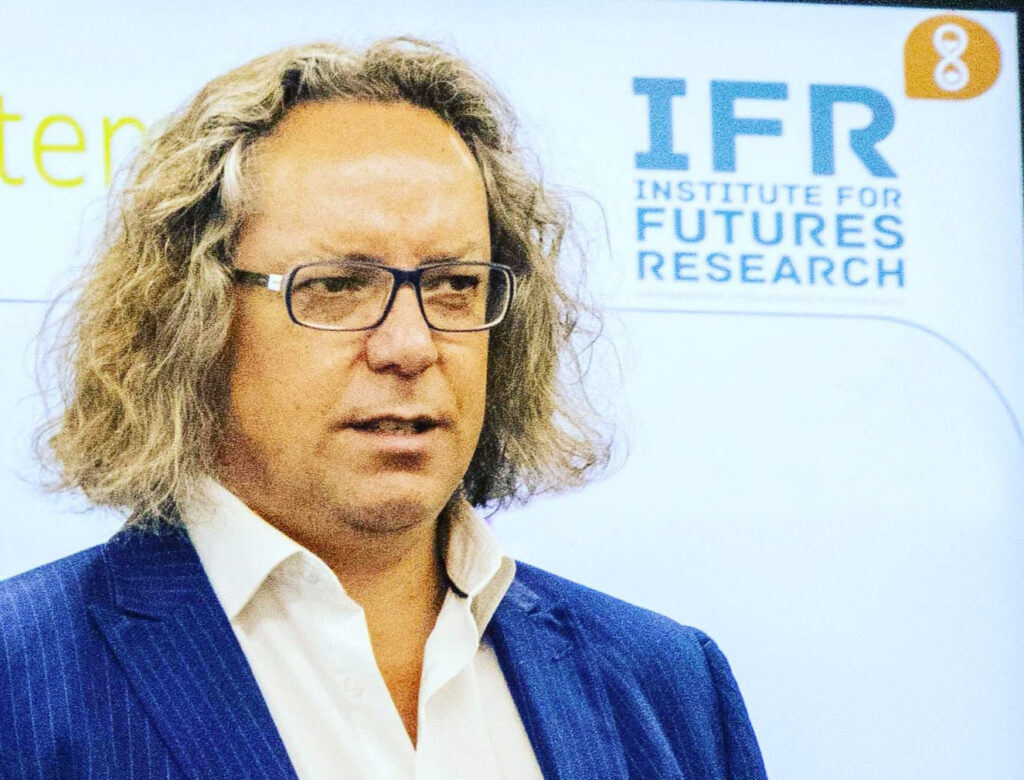 Director for Futures Research at Stellenbosch University, Dr Morne Mostert
Director for Futures Research at Stellenbosch University, Dr Morne Mostert
Mostert says to the uninitiated or ideologically trapped, disruption may seem negative by definition. “The field of innovation, however, demonstrates that systems which are receptive to disruption are rendered thus by outdated offerings, social conditions and the needs of the market; a study of radical innovations also reveals that such disruptions are often born outside the boundaries of the traditional system.” In South Africa, that disruptor is the vibrant private sector, which has read and adapted to the societal landscape, of which education is a part.
When crisis struck, the system behaved the way all rigid systems do: it battened down the hatches and reverted to what it considers its core. Curriculum continuity and curriculum centricity were its guiding lights. “And when experts in the field measured the losses, metrics were largely done against curriculum completion levels,” he explains. “That showed the emergence of the digital elite, as those with access to technology could continue learning while those less technologically inclined could not.”
This, says Mostert, poses some interesting questions: “The mind naturally wanders to whether learning and education grinded to a halt with previous crises, when technology was less evolved. Did society, at all its levels, simply stop learning? It seems unlikely. The resultant questions are even more probing: why do we even have an education system in the first place? What role should it play in society, and how may it be designed in a more agile, less fragile way? And, critically, who will lead the charge?”
Education is traditionally considered to be a public good, but to depend on the government alone for quality education is to deprive society of the potential richness of potential offerings. “This is especially critical in a country like South Africa, where a number of significant characteristics are present to advance education beyond a government-centric paradigm, and where the public good may be served by many role players,” Mostert explains. “Indeed, a vibrant society, like any healthy system, allows for requisite variety and a spectrum of diversity essential for multiple perspectives and networked stability for greater sustainability.”
Mostert says the future is often mistakenly interpreted as a single entity on a linear development path; in other words, the future is often conceived of as one thing. “Consider, for example, the language of ‘the’ future of education,” he explains. “But in Futures Science multiple futures are always recognized, and one reason for this is that more than one future is always possible and the seeds of various futures already exist.” He says depending on the drivers of complexity, such as choice and speed, a spectrum of possible futures may be produced, even from the current trends alone — not to mention the trends yet to come!
He says another reason for assuming multiple futures is that no single reality can explain even the present: “Is education today public or private? Is it online or in person? Is it available to the rich or the poor? Is it available to all or some? In all those cases, the answer is an incontrovertible ‘both’. The future, therefore, will equally reveal a spectrum of reality.”
Education is thus entering an era of increasing privatisation and therefore growing competition, and while some form of competition has always existed, even among public education providers, this new stage will see much sharper focus and notable advancements in customer service. “Schools, colleges and universities have always had to serve customers, but the power differential between customer and provider is shifting in a marked way,” says Mostert. “Increased privatisation will lead to increased options for the customer, and that will necessitate vastly overdue understanding of real and real-time customer needs.”
The Educational Competitive Model reveals an intricate framework of seven key dimensions of educational competitiveness: the mental and intellectual domain, the physical dimensions of education, the personal, social and cultural domains, the professional domain, the educational infrastructure, the philosophical drivers and, of course, the brand and prestige. “It is anticipated that these elements will operate at various levels of significance for various strata of education, but that all will be relevant to some degree for all offerings, from early childhood development through to MBA and PhD levels,” he says. The model proposes that holistic competitive strategy in private education must encompass all seven elements.
There will be a rapid emergence of new brands of educational providers. “In the traditional system, it was mainly the age of the institution, its geographical location and its notable alumni that established its reputation, and such a reputation took many decades, sometimes even centuries to cultivate.” Today, however, the phenomenon of ‘unicorn companies’ (privately owned with $1-billion plus valuations) have shown that reputations can be established in previously unimagined timeframes. “Despite global calls for equality, status is an obdurate dimension of societal architecture, and brands in education will serve this universal human need.”
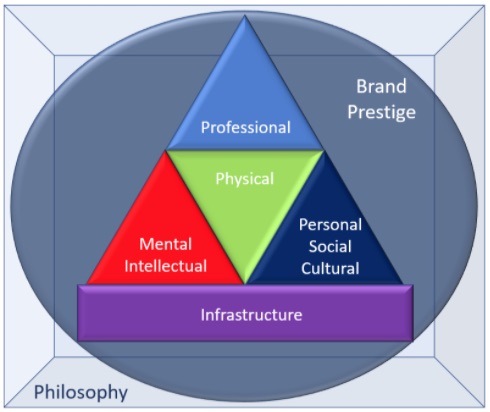 The Educational Competitive Model
The Educational Competitive Model
Private providers will also have to keep up and will need a deep talent pool to respond to notable shifts. Already members of the new generation of coronials have proven themselves to be autodidactic and capable of absorbing content in non-linear ways, often a-synchronous with the teaching schedule.
Even within private education itself, which will not be available to all, a spectrum of options will emerge. “It may be reasonably expected that private providers will work towards differentiation, and different institutions will likely specialise in a selection of domains in order to compete.” He says it is also conceivable that future students, at all levels, will choose different providers for different services.
In that scenario, explains Mostert, students will not “attend” only one but many simultaneous institutions: “A student may attend mental and intellectual development at an international institution while procuring physical development closer to home where physical infrastructure may be accessed more conveniently. This option will become increasingly available as international providers enter the South African market, as has already started to occur. It is also a minor leap for the imagination to see that, even within the same institution, different models will be offered on the educational menu. Some will certainly offer more comprehensive menus than others and many will have modular offerings, meaning that some providers will allow students to make a selection from the domains, with a commensurate modular pricing structure.”
The government monopoly on education is rapidly coming to an end, says Mostert: “Despite potential ideological entrenchment which emphasises the risks of competition, the pitfalls of privatisation and the merits of equality, the attractiveness of the opportunities in the education sector will lead to a spectrum of private educational offerings. Such sectoral evolution may contribute greatly to much-needed innovation. Nor will nostalgia for the school days of yore or ensconcing of the outdated model offer sustainable relief. For a system which has been disruption-receptive for decades, the perfect storm has made landfall.”
— All stories by Jamaine Krige